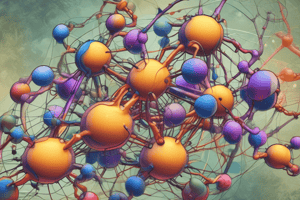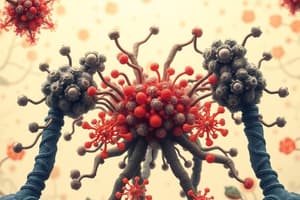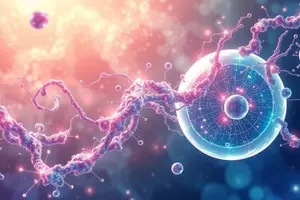Podcast
Questions and Answers
How does dimercaprol (BAL) function in the body?
How does dimercaprol (BAL) function in the body?
- Neutralizes gastric acid secretion
- Increases the permeability of bacterial plasma membrane
- Chelates arsenic, mercury, and copper (correct)
- Inhibits protein synthesis in bacteria by binding to 50S ribosomal subunit
What is the mechanism of action of protamine?
What is the mechanism of action of protamine?
- Increases the permeability of bacterial plasma membrane
- Antagonizes heparin by its alkaline and positive charge (correct)
- Inhibits protein synthesis in bacteria by binding to 50S ribosomal subunit
- Chelates calcium, lead, and digitalis
What is the primary function of EDTA in pharmacodynamics?
What is the primary function of EDTA in pharmacodynamics?
- Inhibits protein synthesis in bacteria by binding to 30S ribosomal subunit
- Increases the permeability of bacterial plasma membrane
- Neutralizes gastric acid secretion
- Chelates calcium, lead, and digitalis (correct)
What is the role of penicillamine in pharmacodynamics?
What is the role of penicillamine in pharmacodynamics?
What is the action of polymixins and amphotericin B on bacteria?
What is the action of polymixins and amphotericin B on bacteria?
Flashcards are hidden until you start studying
Study Notes
Chelating Agents
- Dimercaprol (BAL) is a chelating agent used to treat heavy metal poisoning by binding to metals, such as arsenic, mercury, and lead, and forming a complex that can be excreted from the body.
Anticoagulant Reversal
- Protamine is a drug used to reverse the effects of heparin, a blood thinner, by binding to it and neutralizing its anticoagulant activity.
Chelating Agents
- EDTA (ethylenediaminetetraacetic acid) is a chelating agent used to treat hypercalcemia and heavy metal poisoning by binding to calcium and heavy metals, such as lead, and removing them from the body.
Rheumatoid Arthritis Treatment
- Penicillamine is a chelating agent used to treat rheumatoid arthritis by reducing inflammation and joint damage, possibly by removing excess copper from the body.
Antibacterial Agents
- Polymyxins are antibacterial agents that disrupt the outer membrane of Gram-negative bacteria, ultimately leading to bacterial cell death.
- Amphotericin B is an antifungal agent that forms pores in the fungal cell membrane, allowing ions to leak out and ultimately leading to fungal cell death.
Studying That Suits You
Use AI to generate personalized quizzes and flashcards to suit your learning preferences.




